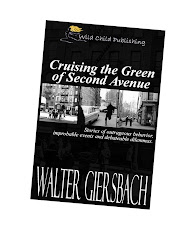That’s called an attention-getting headline, taking us into a narrative hook. Truth is, no one wants your bookcases just because they’re full of your memories. Your kids and other survivors will sweat, wondering what the hell to do with books when you’re gone.
You can truck them down to your library and they’ll give you a note with a fill-in-the-blank for the appraised value. The books will go on their shelves for sale at 50 cents each. I’ve gleaned the unwanted books from my “library” and put them in the bathroom, inviting guests to take one, or two or three at no cost. Thing is, people go into the can and don't come out, with or without a book.
Books don’t get the respect they used to. One of my kids had a carton filled with a score of copies of a detective story. The same book. Twenty copies of Silent Partner by Jonathan Kellerman. Why? “I use them for target practice,” he said.
For years, I had the toughest time not finishing a book — even a free book. I had a moral obligation to read the entire goddamn book. (Traumatic memories of Mom telling me to clean my plate.) Then I learned certain books are meant for skimming, others to read and re-read, and a sizable number tossed aside because they’re badly written (Thomas Matthews’ Rejection: a Lou Drake Mystery), or boring (Cockpit by Jerzy Kosinski), silly (anything more by Jasper Fforde) or offensive (The Island, Peter Benchley).
In my hormone-filled high school years, I read Sagan’s Bonjour Tristesse three times in English and once in French, mooning over the exchange student on the school bus. Vonnegut’s Slaughterhouse Five is another I became enthralled with in 1969 and again in ’06.
I’m religious about taking care of a well-printed and bound book. (I always use bookmarks.) The potboilers I buy for four bits each at the library are also treated with respect. Some, like Allen Ginsberg’s first edition City Lights copy of Howl, is carefully preserved.
I’ve assiduously kept a list of every paper or electronic book I’ve read since 1973. The inventory tells me to stop reading facile feuilleton (as Herman Hesse called them) and begin reading more fiction by Jonathan Lethem and Paul Auster, or non-fiction by Nathaniel Philbrick and Bruce Catton. The list memorably reminds me that a hooker in Korea passed along my copy of Ken Kesey’s One Flew Over the Cuckoo’s Nest, obviously left behind by a previous visitor. There were periods when I snatched up everything by Junichiro Tanizaki, Richard Condon and Philip K. Dick. I still buy everything by Elmore Leonard, Martin Cruz Smith, Caleb Carr and Pete Hamill.
Now, the titles tumble in my brain like socks in the clothes dryer. Why did I buy a second copy of Elmore Leonard Killshot? Forgetfulness. And, which of William Gibson’s foresightful novels haven’t I read? I grit my teeth and know that I either need to carry a 26-page printout or find some cranky electronic device like an iPhone to store the document. But, wait! I think I can save the list as a PDF file and transfer it to my wheezy old Palm Pilot.
Sorry, now, but I gotta run. Just had an idea.




No comments:
Post a Comment